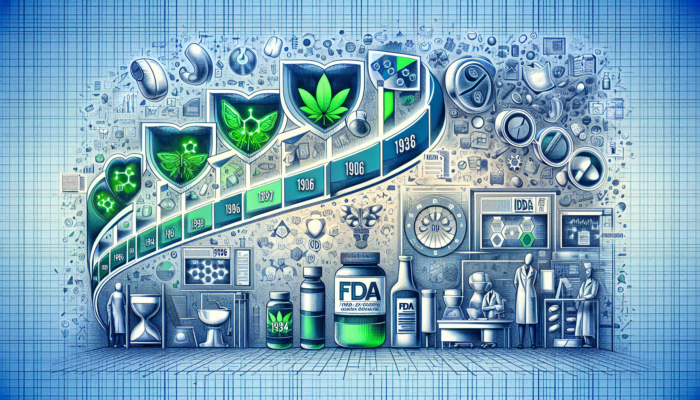Regulatory compliance and HIPAA (Health Insurance Portability and Accountability Act) compliance are two pivotal elements for organisations operating within the healthcare industry. While regulatory compliance guarantees adherence to various legal mandates, HIPAA compliance is specifically concentrated on safeguarding patients’ sensitive health information. Collectively, these two domains intersect to forge a comprehensive framework that protects patient data, encourages ethical practices, and mitigates potential risks associated with data breaches and non-compliance.
A Comprehensive Overview of Regulatory Compliance in Healthcare
Regulatory compliance denotes the commitment of organisations to adhere to laws, regulations, and guidelines established by governing bodies. Within the healthcare sector, regulatory compliance spans a broad range of areas, including but not limited to privacy, security, data protection, financial practices, and patient care standards. The primary aim of regulatory compliance is to uphold the integrity and quality of healthcare services while ensuring patient safety and privacy, thus fostering an environment of trust and accountability.
Essential Dimensions of Regulatory Compliance

- Privacy Regulations: Healthcare organisations are mandated to comply with privacy regulations such as the General Data Protection Regulation (GDPR) and the Health Insurance Portability and Accountability Act (HIPAA). These regulations delineate the protocols for the collection, storage, and transfer of patient information, underscoring the necessity of obtaining consent and protecting sensitive data.
- It is imperative for organisations to secure patient consent prior to the collection and utilisation of their health information. This practice empowers patients to retain control over their data, facilitating informed decisions regarding its use.
- Robust measures must be instituted to secure patient data throughout its storage and transfer processes. Employing encryption techniques, secure data storage systems, and protected communication channels significantly aids in preventing unauthorised access and ensuring data confidentiality.
- Compliance with privacy regulations necessitates that organisations develop clear policies and procedures that explicitly define how patient data will be managed, encompassing protocols for obtaining consent, accessing data, and responding to data breaches effectively.
- Routine audits and assessments should be performed to maintain ongoing compliance with privacy regulations, enabling organisations to identify and mitigate any potential risks or vulnerabilities proactively.
- Security Measures: Regulatory compliance necessitates the deployment of robust security measures to shield patient data from unauthorised access, theft, or breaches. Essential components of an effective security framework include encryption, secure data storage, access controls, and systematic audits of systems.
- Encryption stands as a cornerstone of a solid security framework, employed to protect patient data both during storage and transmission. Encryption algorithms ensure that sensitive data becomes unreadable and unusable without the appropriate decryption keys.
- Utilising secure data storage systems, such as cloud-based platforms equipped with strong encryption and access controls, further enhances protection against unauthorised access or data breaches.
- Implementing access controls is crucial to limit patient data access to authorised personnel only, incorporating measures such as unique user IDs, passwords, and role-based access controls.
- Regular system audits are vital for identifying potential vulnerabilities or weaknesses within the security infrastructure. These audits should encompass vulnerability assessments, penetration testing, and thorough analyses of access logs to detect any suspicious activities.
- Data Retention and Disposal: Regulatory compliance imposes specific guidelines concerning the retention and disposal of patient data. Organisations must devise policies and procedures for the secure retention and disposal of patient records, ensuring compliance with legal mandates while minimising the risk of data breaches.
- Healthcare organisations should establish clear policies and procedures regarding the retention of patient data. These guidelines should define minimum and maximum retention periods for various data types, reflecting legal requirements and industry best practices.
- Secure data disposal methods must be employed to guarantee that patient data is permanently and irreversibly erased when it is no longer necessary. This might involve the physical destruction of storage media or the application of data wiping software.
- Ensuring compliance with data retention and disposal guidelines requires organisations to maintain accurate records of retention and disposal processes. This documentation is essential for demonstrating adherence to legal obligations and can serve as evidence during audits or investigations.
- Financial Regulations: Healthcare organisations must adhere to financial regulations to uphold transparent financial practices. Compliance with regulations such as the Sarbanes-Oxley Act (SOX) ensures accurate financial reporting, prevents fraud, and fosters trust between patients, providers, and stakeholders.
- Financial compliance requires organisations to maintain accurate and complete financial records, encompassing income statements, balance sheets, and cash flow statements. These records should be prepared in alignment with generally accepted accounting principles (GAAP) and any specific regulations pertinent to the healthcare sector.
- Implementing internal controls is essential for preventing and detecting fraud, ensuring the accuracy of financial reporting. This encompasses the segregation of duties, regular internal audits, and the establishment of robust financial reporting systems.
- Compliance with financial regulations also necessitates transparency in financial reporting and the disclosure of any potential conflicts of interest. Organisations should have mechanisms in place for reporting and addressing any unethical or fraudulent practices.
A Detailed Examination of HIPAA Compliance
HIPAA compliance represents a subset of regulatory compliance that specifically centres on the protection of patients’ health information. The HIPAA Privacy Rule and Security Rule establish the standards and requirements essential for covered entities and business associates to safeguard protected health information (PHI). Adhering to HIPAA ensures the confidentiality, integrity, and availability of patient data, which in turn promotes trust and accountability within healthcare operations.
Crucial Elements of HIPAA Compliance
- Privacy Rule: The HIPAA Privacy Rule regulates the usage and disclosure of PHI by covered entities, establishing guidelines for obtaining patient consent, providing notices regarding privacy practices, and defining limits on the usage and disclosure of PHI. Compliance with the Privacy Rule guarantees that patients retain control over their health information and are informed about the utilisation of their data.
- Covered entities are required to obtain written consent from patients prior to using or disclosing their PHI for purposes beyond treatment, payment, or healthcare operations. Patients must also receive a notice of privacy practices that elucidates their rights and how their health information will be utilised and disclosed.
- The Privacy Rule imposes restrictions on the use and disclosure of PHI without patient consent, unless permitted or mandated by law. Covered entities must have policies and procedures in place to ensure compliance with these restrictions and to protect patient data privacy.
- Patients possess the right to access and request amendments to their PHI. Covered entities need to have processes established to manage these requests effectively, ensuring that patient data remains accurate and up to date.
- Ensuring compliance with the Privacy Rule also involves training employees on privacy practices, implementing physical safeguards to protect PHI, and keeping thorough documentation of privacy policies and procedures.
- Security Rule: The HIPAA Security Rule concentrates on the technical, administrative, and physical safeguards that covered entities and business associates must implement to protect electronic PHI (ePHI). This encompasses measures such as risk assessments, access controls, encryption, employee training, and contingency planning to mitigate risks associated with unauthorised access or breaches.
- Covered entities and business associates are obligated to conduct regular risk assessments to identify vulnerabilities and threats to ePHI. These assessments enable organisations to prioritise security measures and allocate resources efficiently.
- Access controls must be enforced to ensure that only authorised individuals can access ePHI. This includes user authentication mechanisms, unique user IDs, and role-based access restrictions.
- Encryption must be employed to safeguard ePHI during both storage and transmission. Encryption algorithms and protocols should be implemented following industry best practices and standards.
- Employee training is vital for HIPAA compliance. Staff should be educated about security policies and procedures, as well as the risks associated with unauthorised access or disclosure of ePHI.
- Contingency planning, which includes regular data backups, disaster recovery strategies, and incident response protocols, aids organisations in recovering from data breaches or system failures, ensuring the availability of ePHI.
- Breach Notification Rule: The HIPAA Breach Notification Rule mandates that covered entities inform affected individuals, the Secretary of Health and Human Services, and, in certain cases, the media if a breach involving unsecured PHI occurs. Adherence to this rule guarantees transparency and timely communication in the event of data breaches, enabling affected individuals to take necessary measures to protect themselves.
- Covered entities must have established policies and procedures for detecting, reporting, and responding to breaches of unsecured PHI. These policies should delineate the steps to be taken in the event of a breach, including notifying affected individuals, the Secretary of Health and Human Services, and the media when necessary.
- The Breach Notification Rule defines the criteria for determining whether a breach has occurred and whether notification is warranted. Covered entities should possess mechanisms to assess breaches and make informed decisions regarding notification based on these criteria.
- Timely notification is essential to enable affected individuals to take appropriate actions to safeguard themselves from potential harm. Covered entities should implement processes to ensure that breach notifications are dispatched promptly, providing the necessary information for affected individuals to mitigate risks associated with the breach.
- Enforcement and Penalties: Violations of HIPAA compliance can lead to severe penalties, fines, and reputational damage for organisations. The Office for Civil Rights (OCR) is responsible for enforcing HIPAA compliance and conducts investigations and audits to ensure adherence to regulations. Compliance with HIPAA not only reduces the risk of penalties but also showcases an organisation’s commitment to protecting patients’ privacy and securing their data.
- The OCR possesses the authority to impose civil monetary penalties on covered entities and business associates that fail to comply with HIPAA regulations. These penalties can vary from $100 to $50,000 per violation, depending on the extent of negligence and the severity of the infraction.
- Beyond monetary penalties, non-compliance with HIPAA can inflict reputational harm on organisations. Patients and stakeholders may lose faith in an entity that does not adequately protect patient data, potentially resulting in a loss of business and legal repercussions.
- The OCR conducts investigations and audits to verify compliance with HIPAA regulations. Organisations should prepare for these audits by maintaining accurate documentation, instituting essential safeguards, and periodically reviewing and updating their privacy and security policies.
The Critical Intersection of Regulatory Compliance and HIPAA Compliance

The convergence of regulatory compliance and HIPAA compliance resides in their mutual objective of safeguarding patient data while ensuring ethical healthcare practices. Regulatory compliance provides a broader framework for organisations to adhere to, encompassing diverse aspects such as privacy, security, financial practices, and patient care standards. In contrast, HIPAA compliance narrows the focus, specifically addressing the protection of health information and patients’ rights.
By melding regulatory compliance with HIPAA compliance, healthcare organisations can establish a holistic approach to the protection of patient data. This integration involves aligning policies, procedures, and security measures to satisfy both general regulatory mandates and the specific stipulations articulated in HIPAA.
Advantages of Merging Regulatory Compliance with HIPAA Compliance
- Enhanced Patient Trust: By ensuring conformity with both regulatory and HIPAA requirements, organisations can cultivate trust with patients. Demonstrating a commitment to preserving their privacy and securing their data fosters a positive reputation for the organisation, encouraging patients to seek healthcare services with confidence.
- Patients are more inclined to trust healthcare organisations that prioritise their privacy and security. Compliance with both regulatory and HIPAA requirements signifies a dedication to the safeguarding of patient data, which can facilitate the establishment of long-term relationships based on trust and confidence.
- Transparency in privacy practices and adherence to regulations further contributes to increased patient trust. When patients are informed about how their data is utilised and protected, they are more likely to feel at ease sharing their information with healthcare providers.
- Reduced Risk of Data Breaches: The integration of regulatory compliance and HIPAA compliance enables organisations to implement robust security measures and policies that diminish the risk of data breaches. By addressing vulnerabilities and adhering to best practices, organisations can protect sensitive patient information from unauthorised access or theft.
- Regulatory compliance offers a framework for identifying and addressing potential security vulnerabilities. By following established guidelines and best practices, organisations can significantly reduce the risk of data breaches and unauthorised access to patient information.
- HIPAA compliance specifically focuses on the protection of health information, providing additional guidelines and requirements for safeguarding patient data. By integrating HIPAA compliance with broader regulatory compliance efforts, organisations can enhance their overall security posture and diminish the likelihood of data breaches.
- Regular risk assessments, vulnerability scanning, and penetration testing are essential elements of an effective security programme. Conducting these assessments allows organisations to identify and address vulnerabilities before malicious actors can exploit them.
- Streamlined Operations: The integration of regulatory compliance and HIPAA compliance streamlines operational processes by aligning policies, procedures, and documentation. This alignment eliminates redundancies, reduces complexity, and enhances overall efficiency, leading to improved resource utilisation and cost savings.
- Compliance with both regulatory and HIPAA requirements necessitates that organisations establish clear policies and procedures for managing patient data. By synchronising these policies and procedures, organisations can eliminate duplication of efforts and enhance their operational efficiency.
- Documentation is a crucial aspect of both regulatory and HIPAA compliance. By integrating documentation requirements, organisations can simplify record-keeping processes and ensure that all necessary documentation is maintained consistently and in an orderly manner.
- Streamlined operations result in better resource utilisation and cost savings. By minimising redundancies and enhancing efficiency, organisations can allocate their resources more effectively, thereby reducing the overall cost of compliance.
- Legal and Financial Protection: Adhering to both regulatory and HIPAA requirements provides organisations with legal and financial safeguards. By complying with established guidelines, organisations can minimise the risk of penalties, fines, and reputational damage stemming from non-compliance.
- Failure to comply with regulatory and HIPAA requirements can lead to significant penalties and fines. By integrating compliance efforts, organisations can ensure they meet the necessary requirements, thereby reducing the risk of non-compliance.
- Legal repercussions of non-compliance may include lawsuits, regulatory investigations, and damage to the organisation’s reputation in the industry.
Frequently Asked Questions (FAQ)
Q1: What is regulatory compliance?

A1: Regulatory compliance refers to the adherence of organisations to laws, regulations, and guidelines established by governing bodies to ensure lawful operations.
Q2: What are the key aspects of regulatory compliance in the healthcare sector?
A2: The key aspects of regulatory compliance in the healthcare sector include privacy regulations, security measures, data retention and disposal, and financial regulations.
Q3: What is HIPAA compliance?
A3: HIPAA compliance is a subset of regulatory compliance focusing specifically on protecting patients’ health information and ensuring their privacy rights are upheld.
Q4: What are the key aspects of HIPAA compliance?
A4: The key aspects of HIPAA compliance encompass the Privacy Rule, Security Rule, Breach Notification Rule, and the enforcement mechanisms and penalties associated with non-compliance.
Originally posted 2023-08-14 08:29:15.
The post Regulatory Compliance and HIPAA: Essential Guide for Healthcare Providers appeared first on Healthcare Marketing Service.


